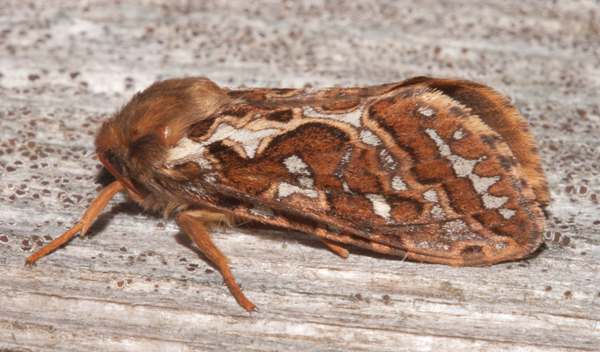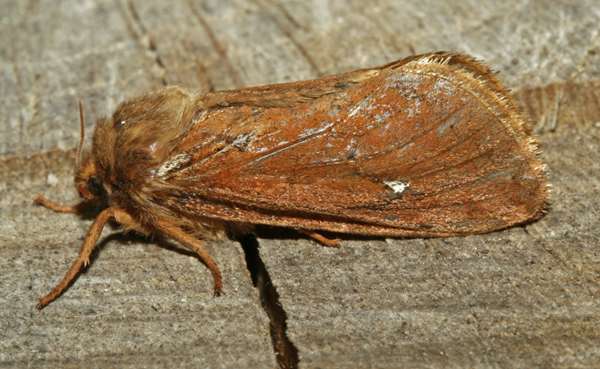Map-winged Swift - Hepialus fusconebulosa
Phylum: Arthropoda - Class: Insecta - Order: Lepidoptera - Family: Hepialidae

Five of the approximately 500 species of the Hepialidae moths (Swift moths) occur in Great Britain and Ireland.
The elongated wings of the Map-winged Swift are positioned vertically along the body during rest, and they fly mainly from dusk to complete darkness in early May to early July.
Their habitat is pasture, heath, moorland and open woodland. They are occasionally found in sand dune systems.
The forewing of the Map-winged Swift ranges between 14 and 26mm.
Below: the orange form of the Map-winged Swift

Distribution
In Britain and Ireland this moth is most common in the north and is almost entirely absent from large parts of southern and eastern England.

Lifecycle
The Map-winged Swift moth is shortlived as its shortened proboscis prevents it from being able to feed. It over-winters twice in its larval form and pupates below ground.
The larval foodplant of the Map-winged Swift is thought to be Bracken roots, but it is also sometimes found on Red Fescue (Festuca rubra), a clump-forming grass species.
Pictures: Rob Petley-Jones
Studying butterflies and moths...
Excited at the prospect of flyfishing? So are we, and we're pretty sure you would find the Winding River Mystery trilogy of action-packed thrillers gripping reading too. Dead Drift, Dead Cert, and Dead End are Pat O'Reilly's latest river-and-flyfishing based novels, and now they are available in ebook format. Full details on our website here...
Buy each book for just £4.96 on Amazon...
Please Help Us: If you have found this information interesting and useful, please consider helping to keep First Nature online by making a small donation towards the web hosting and internet costs.
Any donations over and above the essential running costs will help support the conservation work of Plantlife, the Rivers Trust and charitable botanic gardens - as do author royalties and publisher proceeds from books by Pat and Sue.
